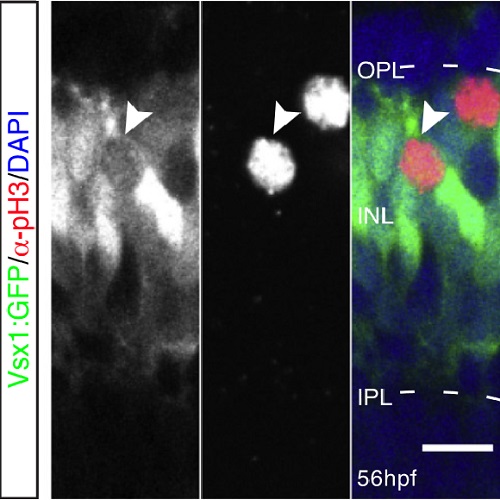Mitotic position and morphology of committed precursor cells in the zebrafish retina adapt to architectural changes upon tissue maturation.
The development of complex neuronal tissues like the vertebrate retina requires the tight orchestration of cell proliferation and differentiation. Although the complexity of transcription factors and signaling pathways involved in retinogenesis has been studied extensively, the influence of tissue maturation itself has not yet been systematically explored. Here, we present a quantitative analysis of mitotic events during zebrafish retinogenesis that reveals three types of committed neuronal precursors in addition to the previously known apical progenitors. The identified precursor types present at distinct developmental stages and exhibit different mitotic location (apical versus nonapical), cleavage plane orientation, and morphology. Interestingly, the emergence of nonapically dividing committed bipolar cell precursors can be linked to an increase in apical crowding caused by the developing photoreceptor cell layer. Furthermore, genetic interference with neuronal subset specification induces ectopic divisions of committed precursors, underlining the finding that progressing morphogenesis can effect precursor division position.

- Cell Rep 2014 Apr 24;7(2):386-97
- 2014
- Developmental Biology
- 24703843
- PubMed
Enabled by:
